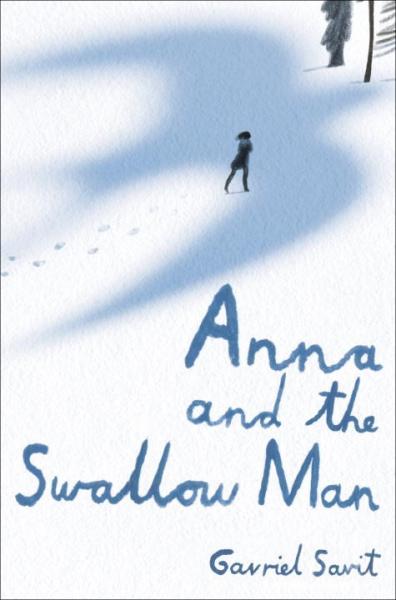An Indies Introduce Q&A With Gavriel Savit
 Gavriel Savit is the author of Anna and the Swallow Man (Knopf Books for Young Readers), a Winter/Spring 2016 Indies Introduce debut title for young adults and a Winter 2015–2016 Kids’ Indie Next List pick.
Gavriel Savit is the author of Anna and the Swallow Man (Knopf Books for Young Readers), a Winter/Spring 2016 Indies Introduce debut title for young adults and a Winter 2015–2016 Kids’ Indie Next List pick.
In 1939, young Anna is orphaned when the Germans take her father, a linguistics professor, during the purge of intellectuals in Poland. When Anna’s father does not return, she meets a mysterious man, who identifies himself by the name “Swallow Man.” Together, they set off on foot in an attempt to save themselves from the scourge of World War II.
“Like Anna’s father, the Swallow Man has a gift for languages, and it is through language that they form a bond borne from the desire to survive the war-torn European landscape,” said Sara Grochowski of Brilliant Books in Traverse City, Michigan. “Like Anna and her travelling companion, the Swallow Man, author Gavriel Savit recognizes the power of language — that words, sentences, and stories can wriggle deep into your heart and envelop a reader in an experience that manages to leave you both enchanted and brokenhearted. Anna and the Swallow Man is an affecting story that readers won’t soon forget.”
 Anna and the Swallow Man, which is imbued with magical realism, takes place during the Holocaust. What inspired you to write this story?
Anna and the Swallow Man, which is imbued with magical realism, takes place during the Holocaust. What inspired you to write this story?
Gavriel Savit: It’s always hard to pinpoint a single moment of underlying inspiration for me — my ideas tend to be found as the dust settles over the collision of lots of different ideas. When it comes to Anna and the Swallow Man, some of those ideas include the magical imprecision and unreliability of language, the mythologization of the Holocaust, the relative (un)reliability of early memory, and, perhaps most crucially, the beautiful, magical foment of uncertainty — particularly the open, uncomplicated uncertainty of childhood.
Language plays an essential role in your debut, so much that it almost serves as another character. Do you have any thoughts about the power and fluidity of language? Outside of being a writer, what role has language played in your life?
GS: I think language is categorically the easiest way into magic for human beings. At a very basic level, I think the words we have determine the ideas we can conceive of, the categories into which we sort the world, the color and quality of our associations. Language also provides us with the opportunity to consider combinations of ideas that the physical world can’t accommodate — metaphor and comparison, the basic building blocks of human reason, are in some ways dependent on a linguistic framework for their very operation. Saying that “New York City is a whale,” provides a certain perspective and understanding that is hardly attainable without the scaffolding of language. It literally changes our mind, changes the way we see the world. Language is pixie dust.
What sort of research did you conduct to ensure this critical time in history was portrayed accurately?
GS: For me, there are two crucial levels of research when it comes to historical fiction. First, you have to know the state of play in your period — where’s the political power, where are the conflicts of interest, who are the dominant players in culture. This all needs to be done before you can begin writing — deep background. Once you’re in the process of writing, you’ll inevitably run into situations where you want to be able to cite specific details, and this is where the Internet (though it feels like cheating, sometimes) is your best friend: 20 minutes of Googling around, and all of a sudden, you know precisely what was in a Soviet soldier’s ration kit, circa 1941.
Anna and the Swallow Man is a young adult novel that has quickly became a favorite among both teens and adults. Did you always intend for it to be a YA novel? Does the cross readership surprise you?
GS: I don’t tend to think very much about audience while I’m writing. There are enough challenges inherent in the construction of a good story without worrying about who’s going to read it, and by the time a manuscript has been finished, I frequently find that it knows who it’s for. From my perspective, Anna and the Swallow Man is a book that’s best suited to individuals, not to age groups. I’ve seen fifth graders really get everything about it, and I’ve seen people in their mid-30s miss some important stuff. If you pick up the book, start reading, and want to continue, then Anna and the Swallow Man is your book, whether you’re nine or 90.
As a singer and actor with a BFA in musical theatre from the University of Michigan, what drew you to musical theatre — and what inspired you to make the move to author?
GS: Writing and performing make a really good complement to one another. At base, both pursuits are about telling a good story well. In the case of performing, you do it by taking charge of one individual character within a large collective. As a writer, you do it by taking charge of an entire postulated universe, all by yourself. The two practices help to balance one another out really nicely.
As the final survivors of WWII leave us, what role do you feel independent bookstores and booksellers play in keeping history alive?
GS: In a world in which books and narratives can be removed from the conversation, banned by schools, removed from the shelves in public libraries, or simply passed over in silence by corporate bookselling chains, independent bookstores are the last best chance for the persistence of those perspectives threatened by the shifting tides of history and public opinion. To the independent bookseller is bequeathed the trust of the voice that no longer has the time left to speak. Thank you for carrying it forward.
Anna and the Swallow Man by Gavriel Savit (Knopf Books for Young Readers, Hardcover, 9780553513349) Publication Date: January 26, 2016.
Learn more about the author at gavrielsavit.com or follow him on Twitter and Instagram.
ABA member stores are invited to use this interview or any others in our series of Q&As With Indies Introduce debut authors in newsletters and social media and in online and in-store promotions. Please let us know if you do.

